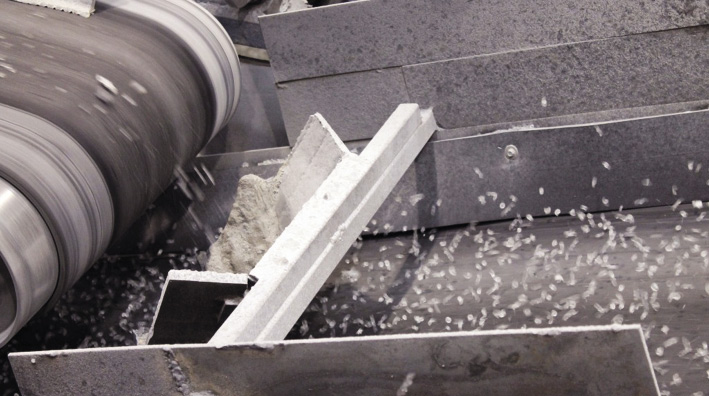In order to maintain the trajectory of achieving the objectives of the 2015 Paris Climate Agreement and limiting global warming to below 1.5 C, humanity can only emit a further 800 gigatons of CO2 globally. As the cheapest sources of new electricity generation, solar PV and wind energy have become the backbone of the transition to a decarbonized global economy. However, the terawatt-scale growth trajectory of both technologies comes with material and energy demands for component manufacturing which, in part, will have to be satisfied by non-renewable resources.
To effectively address the energy-resource-nexus of solar PV, a global circularity strategy for the components and embedded materials is needed. An increasing number of markets around the world are tackling this topic proactively through voluntary initiatives and regulations. It should be a core focus across the PV value chain – starting from resource extraction through manufacturing, development, installation, operation and maintenance of PV systems. The aim should be to enable circularity for components and materials wherever possible, be it through the repair and reuse of components, such as inverters, or the recycling and recovery of materials like silver, silicon, copper, and glass.
Achieving a fully decarbonized global economy in line with the Paris Agreement will require a cumulative PV capacity of about 70 terawatts (TW) by 2050. To get there in time, the PV industry needs to ramp up production capacities to 3 TWp per annum within the next couple of years, according to renowned PV scientist Pierre Verlinden. Looking at the embodied carbon emissions which would come with that growth, it becomes clear that high-value recycling, as well as decarbonization of the energy supply for the PV value chain, are necessary to decouple the required growth of the industry from the energy-resource-carbon nexus.
Today, the predominant PV technology – mono-PERC – has, on average, an embodied carbon content of between 500 and 600 kg CO2eq/kWp, largely attributed to polysilicon production and purification. If the solar PV industry were to maintain this level of carbon intensity across the entire supply chain, a terawatt of conventional mono-PERC capacity would account for 0.5 gigatons to 0.6 gigatons of carbon being released up into the atmosphere during its production.
Not all photovoltaics are this carbon-intensive, however. Increasing manufacturing efficiencies, decarbonizing the supply chain, and sourcing post-industrial and post-consumer recycled content are effective means to further reduce the carbon footprint of PV modules. With current industrial processes, it is already possible to produce circular PV-grade silicon with a carbon footprint reduced by 50%.
The availability of post-industrial and post-consumer secondary raw materials from PV module recycling requires high-value recycling approaches, which go beyond the “bulk-recovery” of easy to recycle materials, such as the aluminum frame or glass. High-value recycling approaches have been widely researched for all PV technologies, but thus far have only been implemented on a global and industrial scale in thin-film recycling for CdTe photovoltaic panels, which achieves recovery rates of 95% for the semiconductor material and 90% for the glass.
In France, ROSI Solar, a company offering solutions for recycling and revalorization of raw materials in the PV industry, is currently working on scaling high-value recycling processes for silicon-based PV technologies, unlocking the secondary resource value of circular PV-grade silicon, which helps to reduce embodied carbon in the silicon supply chain by 50% and could reduce carbon emissions by more than 90 million tons of CO2 per terawatt.
Ultimately, creating a market pull for lower carbon modules which are being produced by renewable electricity in all parts of the supply chain, and incorporate recycled bulk and specialty materials, such as glass, aluminum, circular PV-grade silicon, and recycled compound semiconductors in the PV value chain – for example through specific requirements in tenders and procurement criteria – can provide sufficient incentive to enable more sustainable PV and take the high-value PV recycling industry to the next level.
The recent adoption of the international EPEAT Ecolabel, which includes recycled content requirements for PV modules and inverters, in addition to recommendations from the Renewable Energy Buyers Association and other procurement entities for PV electricity, perhaps offers the most efficient way to incentivize high-value PV recycling and address the energy-resource-nexus.
* We incorrectly stated ROSI was a non-profit organization. The text has been amended on May 14, 2021 to reflect its status as a for profit company.
About the author
Andreas Wade is global sustainability director at U.S.-based thin film PV module manufacturer First Solar. He is also president of the International Thin-Film Solar Industry Association (PVthin), the elected vice-chair of the SolarPower Europe Strategy Committee, and the deputy operating agent of the International Energy Agency’s Photovoltaic Power Systems Program Task 12. In addition, Wade is a member of the Steering Committee of the European Technology and Innovation Platform Photovoltaics (ETIP PV).
UP campaign partners
This content is protected by copyright and may not be reused. If you want to cooperate with us and would like to reuse some of our content, please contact: editors@pv-magazine.com.
